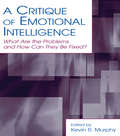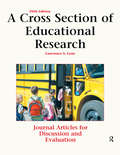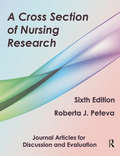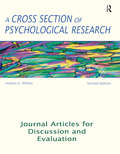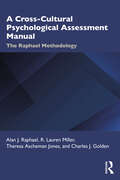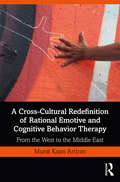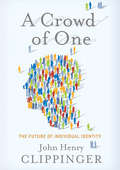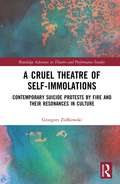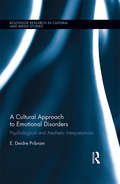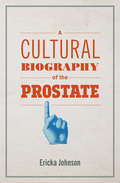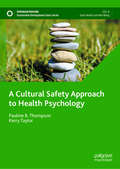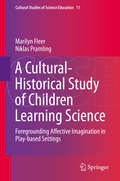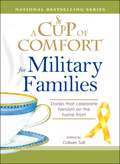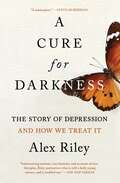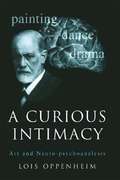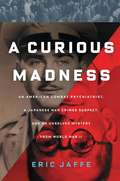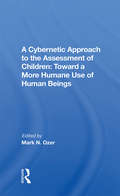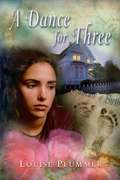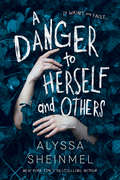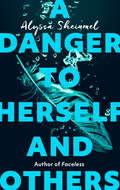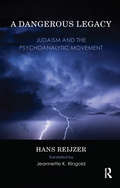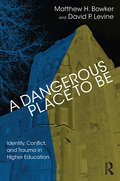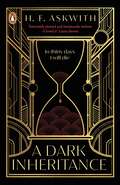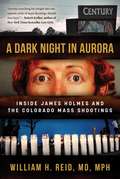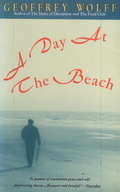- Table View
- List View
A Critique of Emotional Intelligence: What Are the Problems and How Can They Be Fixed? (Applied Psychology Series)
by Kevin R. MurphyThis book analyzes important criticisms of the current research on Emotional Intelligence (EI), a topic of growing interest in the behavioral and social sciences. It looks at emotional intelligence research and EI interventions from a scientific and measurement perspective and identifies ways of improving the often shaky foundations of our current conceptions of emotional intelligence. With a balanced viewpoint, A Critique of Emotional Intelligence includes contributions from leading critics of EI research and practice (e.g., Frank Landy, Mark Schmit, Chockalingam Viswesvaran), proponents of EI (e.g., Neal Ashkanasy, Catherine Daus), as well as a broad range of well-informed authors. Proponents claim that EI is more important in life than academic intelligence, while opponents claim that there is no such thing as emotional intelligence. Three key criticisms that have been leveled at emotional intelligence include: (1) EI is poorly defined and poorly measured; (2) EI is a new name for familiar constructs that have been studied for decades; and (3) claims about EI are overblown. While the book presents these criticisms, the final section proposes ways of improving EI research and practice with EI theories, tests, and applications.
A Cross Section of Educational Research: Journal Articles for Discussion and Evaluation
by Lawrence S Lyne• This collection of research articles emphasizes topics of interest to classroom teachers. • The 38 research articles illustrate: •survey research •quantitative content analysis •correlational research •true experimental research •quasi-experimental research •pre-experimental research •single-subject research/behavior analysis •causal-comparative research •program evaluation •qualitative research •combined qualitative/quantitative research •meta-analysis • The lines in each article are numbered sequentially, making it easy to refer to specific parts of the article during classroom discussions. • The availability of a single source of research articles is convenient and helps you avoid copyright infringement problems. • Factual Questions at the end of each article allow students to check their comprehension. • Questions for discussion stimulate classroom discussions of research methods. • After answering the questions, students rate the quality of each article using 13 basic criteria. More detailed criteria in the Appendix may also be applied. • Ideal for courses in which the primary goal is to learn how to evaluate research. • Twenty-one different journals are represented in the 38 articles in this collection. Students see the diversity of educational research since the journals vary in their standards for publication. • New to this edition: Thirteen new articles keep this popular research reader up-to-date.
A Cross Section of Nursing Research: Journal Articles for Discussion and Evaluation
by Roberta J Peteva• The 39 research articles in this collection illustrate a wide variety of models for both quantitative and qualitative nursing research. •The lines in each article are sequentially numbered, which facilitates classroom discussions by allowing professors and students to pinpoint specific parts of an article. •The articles have been carefully selected for use with students who are just beginning their study of research methods. The difficulty level will challenge but not overwhelm. •Factual Questions at the end of each article draw students’ attention to methodologically important points. •Questions for Discussion request students’ opinions on unique aspects of each article. •Helps instructors avoid copyright infringement problems. The publisher has paid fees to the copyright holders for permission to include the research articles in this book. • New to this edition: A copy of our Bonus Articles for A Cross Section of Nursing Research booklet is included free of charge. •The research articles are classified under these major headings: •nonexperimental quantitative research•true experimental research•quasi-experimental research•pre-experimental research•qualitative research•combined qualitative and quantitative research•test reliability and validity research•meta analysis.The articles have been drawn from a wide variety of journals such as: •Behavior Modification•Cancer Nursing•Computers in Nursing•Computers, Informatics, Nursing•Health Education & Behavior•Issues in Mental Health Nursing•Journal for Nurses in Staff Development•Journal of Community Health Nursing•Journal of Gerontological Nursing•Journal of Nursing Care Quality•Journal of Pediatric Nursing•Journal of Research in Nursing•Journal of the Society of Pediatric Nurses•Nurse Educator•Nursing Research•Psychological Reports•Public Health Nursing•Rehabilitation Nursing•Research in Nursing & Health•The Journal of Nursing Administration•Western Journal of Nursing Research
A Cross Section of Psychological Research: Journal Articles for Discussion and Evaluation
by Andrea K MilinkiFirst Published in 2006. This book is designed for students who are learning how to evaluate published psychological research. The 41 research articles in this collection provide the stimulus material for such a course.
A Cross-Cultural Psychological Assessment Manual: The Raphael Methodology
by Charles J. Golden Alan J. Raphael R. Lauren Miller Theresa Ascheman JonesThis user-friendly manual provides a cross-cultural psychological assessment battery, including projective methods. Authors outline a new, empirically validated, reliable system, which seeks to update the scoreable and interpretable factors and entwine commonly respected “tried and true” graphomotor tests, thereby maximizing their efficacy in the assessment of significant psychological traits in children and adults. Because of its use as a gender fair, culture free, language free testing method, it will be a valuable asset in all areas of current psychological assessment. The CCPAB test takes approximately 20 to 40 minutes to administer, and does not require any administration materials that most practitioners would not have readily available. The CCPAB can be used by evaluators on its own or in conjunction with other psychological and neuropsychological test data, as well as by mental health treatment providers seeking a quick and accurate way to assess the psychological functioning of individuals aged six years and older. Multiple appendices contain information on scoring criteria, scoring keys, and a wealth of sample questions which will also be a useful resource for evaluators. This manual is appropriate for users ranging from graduate-level students in training and supervision to even the most skilled assessment psychologists for quick and valid assessment of a wide range of clients.
A Cross-Cultural Redefinition of Rational Emotive and Cognitive Behavior Therapy: From the West to the Middle East
by Murat ArtiranThis unique volume integrates history, mythology/folklore, and theory and research to bridge the gap between Western and Middle Eastern approaches to and understanding of psychotherapy, particularly Cognitive Behavior Therapy (CBT) and Rational Emotive Behavior Therapy (REBT). Part I lays the foundation with an overview of the theoretical essentials of REBT and CBT in the West, the goals and assumptions of REBT and CBT in the Middle East, and what Middle Eastern clients understand about cognitive distortions, irrational beliefs, and emotions. In Part II, chapters delve more deeply into how psychology is placed in the context of Middle Eastern folklore. The author provides a summary of the history of psychology in the Middle East; an analysis of the relevance of Sufism to self-acceptance, acceptance of others, and life acceptance; and an evaluation of the use of metaphor in psychotherapy from the Middle Eastern perspective. Finally, the author provides case studies that show how these concepts are applied in practice. This text is ideal reading for researchers and clinicians who study Middle Eastern psychology and who work with Middle Eastern clients, as well as for Middle Eastern psychologists and clients.
A Crowd of One: The Future of Inidvidual Identity
by John HenryGreat leaps forward in scientific understanding have, throughout history, engendered similar leaps forward in how we understand ourselves. Now, the new hybrid disciplines of evolutionary biology and social physics are making the next leap possible-and fundamentally altering our notions of individual identity. If identity is a fact not derived from within the individual, but conferred on an individual by a group, or network, a host of assumptions about how governments work, how conflicts arise and are resolved, and how societies can be coaxed toward good are overturned. John Clippinger brilliantly illuminates how the Enlightenment itself-the high point of individual assertiveness-was a product not just of a few moments of individual inspiration and creativity, but rather of a societal shift that allowed innovation and creativity to flourish. Michelangelo owes quite as much to the circumstances of the Renaissance as the Renaissance does to the work of Michelangelo. Now, the digitalization of society, which affects all of us already, allows new insight into these questions: What does it require for societies, organizations and individuals, to thrive? Who decides who you are? How can happiness be shared and spread? Who can you trust?
A Cruel Theatre of Self-Immolations: Contemporary Suicide Protests by Fire and Their Resonances in Culture (Routledge Advances in Theatre & Performance Studies)
by Grzegorz ZiółkowskiA Cruel Theatre of Self-Immolations investigates contemporary protest self-burnings and their echoes across culture. The book provides a conceptual frame for the phenomenon and an annotated, comprehensive timeline of suicide protests by fire, supplemented with notes on artworks inspired by or devoted to individual cases. The core of the publication consists of six case studies of these ultimate acts, augmented with analyses and interpretations hailing from the visual arts, film, theatre, architecture, and literature. By examining responses to these events within an interdisciplinary frame, Ziółkowski highlights the phenomenon’s global reach and creates a broad, yet in-depth, exploration of the problems that most often prompt these self-burnings, such as religious discrimination and harassment, war and its horrors, the brutality and indoctrination of authoritarian regimes and the apathy they produce, as well as the exploitation of the so-called "subalterns" and their exclusion from mainstream economic systems. Of interest to scholars from an array of fields, from theatre and performance, to visual art, to religion and politics, A Cruel Theatre of Self-Immolations offers a unique look at voluntary, demonstrative, and radical performances of shock and subversion.
A Cultural Approach to Emotional Disorders: Psychological and Aesthetic Interpretations (Routledge Research in Cultural and Media Studies)
by E. Deidre PribramIn her latest contribution to the growing field of emotion studies, Deidre Pribram makes a compelling argument for why culturalist approaches to the study of emotional "disorders" continue to be eschewed, even as the sociocultural and historical study of mental illness flourishes. The author ties this phenomenon to a tension between two fundamentally different approaches to emotion: an individualist approach, which regards emotions as the property of the individual, whether biologically or psychologically, and a culturalist approach, which regards emotions as collective, social processes with distinctive histories and meanings that work to produce particularized subjects. While she links a strong preference for the individualist construct in Western culture to the rise of the psychological and psychiatric disciplines at the turn of the twentieth century, Pribram also engages with a diverse set of case studies tied to psychological and aesthetic discourses on emotions. These range from Van Gogh’s status as emotionally disordered to the public, emotional aesthetics of 19th century melodrama to the diagnostic categories of the DSMs and the fear of "globalizing" emotional disorders in the 21st century. This genuinely interdisciplinary approach makes for a text with potential application in a wide range of disciplines within cultural studies, including sociocultural and historical analysis of psychiatry and psychology, gender theory, subject and identity theory, popular culture studies, and history and theory of the arts.
A Cultural Biography of the Prostate
by Ericka JohnsonWhat contemporary prostate angst tells us about how we understand masculinity, aging, and sexuality.We are all suffering an acute case of prostate angst. Men worry about their own prostates and those of others close to them; women worry about the prostates of the men they love. The prostate--a gland located directly under the bladder--lurks on the periphery of many men's health issues, but as an object of anxiety it goes beyond the medical, affecting how we understand masculinity, aging, and sexuality. In A Cultural Biography of the Prostate, Ericka Johnson investigates what we think the prostate is and what we use the prostate to think about, examining it in historical, cultural, social, and medical contexts. Johnson shows that our ways of talking about, writing about, imagining, and imaging the prostate are a mess of entangled relationships. She describes current biomedical approaches, reports on the "discovery" of the prostate in the sixteenth century and its later appearance as both medical object and discursive trope, and explores present-day diagnostic practices for benign prostate hyperplasia--which transform a process (urination) into a thing (the prostate). Turning to the most anxiety-provoking prostate worry, prostate cancer, Johnson discusses PSA screening and the vulnerabilities it awakens (or sometimes silences) and then considers the presence of the absent prostate--how the prostate continues to affect lives after it has been removed in the name of health.
A Cultural Safety Approach to Health Psychology (Sustainable Development Goals Series)
by Kerry Taylor Pauline B. ThompsonThis book applies the concept of cultural safety to the field of health psychology in a US context as a means to achieve health equity. First developed in New Zealand by Māori midwives, cultural safety can be understood as both a philosophy and a way of working within a social model of health as an alternative approach to understanding health and illness. Health, social, and human service professionals are at the forefront of interactions with a range of people who often experience disparities in health and social outcomes. In thirteen chapters, the authors explore the social determinants of health; the practices and pitfalls of intercultural communication; and community capacity, resilience, and strengths as correctives to discourses of deficiency. The book concludes with a comparative look at cultural safety in different national contexts, and a discussion of the value of critical reflective practice. Complete with chapter objectives, scenarios, suggested readings and films, and questions for critical thinking, this book is an invaluable resource for students and practitioners alike in health psychology and related fields, and a vital contribution to the literature on cultural safety.
A Cultural-Historical Study of Children Learning Science: Foregrounding Affective Imagination in Play-based Settings (Cultural Studies of Science Education #11)
by Marilyn Fleer Niklas PramlingThis book moves beyond the traditional constructivist and social-constructivist view of learning and development in science. It draws upon cultural-historical theory in order to theorise early childhood science education in relation to our currently globalised education contexts. The book argues that concept development in science for young children can be better theorised by using Vygotsky's concept of Imagination and creativity, Vygotsky's theory of play, and his work on higher mental functions, particularly the concept of inter and intrapsychological functioning. Key concepts are extracted from the theoretical section of the book and used as categories for analysis in presenting evidence and new ideas in the second section of the book. In this second part of the book, the authors examine how science knowledge has been constructed within particular countries around the globe, where empirical research in early childhood science education has occurred. The third part of the book examines the nature of the encounter between the teacher and the child during science learning and teaching. In the final part of the book the authors look closely at the range of models and approaches to the teaching of early childhood science that have been made available to early childhood teachers to guide their planning and teaching. They conclude the book with a theoretical discussion of the cultural-historical foundation for early childhood science education, followed by a model of teaching scientific concepts to young children in play-based settings, including homes and community contexts.
A Cup of Comfort for Military Families
by Colleen SellA collection of stories about military families.
A Cure for Darkness: The Story of Depression and How We Treat It
by Alex RileyA fascinating look at the treatment of depression, blending journalism, science, history, and memoir, by an award-winning science writer.What is depression? Is it a persistent low mood or a complex range of symptoms? Is it a single diagnosis or a diversity of mental disorders requiring different treatments? In A Cure for Darkness, science writer Alex Riley explores these questions, digging into the long history of depression and chronicling the lives of psychiatrists and scientists who sought cures for their patients. Since 2015, Riley has received both cognitive behavioral therapy and antidepressants for his own depression. Throughout his treatment, he wondered—are antidepressants effective? Do short-term talking therapies actually work? And what treatments are on the horizon for those who don&’t respond to these first-line treatments? Expanding from his own experience, he tracks treatments through history, from the &“talking cure&” to electroconvulsive therapy to magic mushrooms. With depression fast becoming the leading burden of disease around the world, the future of mental healthcare depends not just on the development of new therapies, but on increasing access for people who are currently without. Reporting on the field of global mental health from its colonial past to the present day, Riley highlights a range of scalable therapies, including how a group of grandmothers stands on the frontline of a mental health revolution. Weaving in personal and family history, A Cure for Darkness is a gripping narrative journey and a surprisingly hopeful work that delves deep into the science of mental health.
A Curious Intimacy: Art and Neuro-psychoanalysis
by Lois OppenheimWhat can neuroscience contribute to the psychodynamic understanding of creativity and the imagination? A Curious Intimacy is an innovative study into the interrelation between art and neuro-psychoanalysis which significantly narrows the divide between the humanities and the sciences. Situating our grasp of the creative mind within the historical context of theories of sublimation, Lois Oppenheim proposes a change in paradigm for the study of the creative process, questioning the idea that creativity serves, above all, the reparation of early object relationships and the resolution of conflict. The book is divided into two parts. Part One, Art and the Brain, introduces the field of neuro-psychoanalysis and examines the contribution it can make to the discussion of gender and art. Part Two, A New Direction for Interdisciplinary Psychoanalysis, draws on the verbal and visual artistry of Samuel Beckett, Paul Klee and Martha Graham to put to the test the proposed new direction for applied psychoanalysis. Lois Oppenheim concludes by addressing the future of psychoanalysis as it becomes increasingly informed by neuroscience and raising questions about what the neurobiology of emotion and feeling has to tell us about the creative experience of an individual and what might constitute a 'neuro-psychoanalytic aesthetics'. A Curious Intimacy will have great appeal for all those interested in the study of imagination and creativity. It will also be of particular interest to students across the humanities and sciences and to psychotherapists and psychoanalysts wanting to explore the contribution that neuro-psychoanalysis can make to our understanding of the creative process.
A Curious Madness: An American Combat Psychiatrist, a Japanese War Crimes Suspect, and an Unsolved Mystery from World War II
by Eric JaffeFrom an "illuminating and entertaining" (The New York Times) young writer, the story that explores the fateful intersection of two men at the Tokyo war crimes trial that followed World War II: a Japanese nationalist charged with war crimes and the American doctor assigned to determine his sanity-and thus his fate. <P><P> In the wake of World War II the Allied forces charged twenty-eight Japanese men with crimes against humanity during the Tokyo war crimes trial. At their conclusion, seven were hanged for their war crimes and almost all the others served lengthy prison sentences. <P><P>Shumei, a brilliant ideologue, was the only civilian among the indicted "Class-A" suspects. In the years leading up to World War II, Okawa had outlined a divine mission for Japan to lead Asia, prophesized a great clash with the United States, planned coups d'etat with military rebels, and financed the assassination of a Prime Minister. <P><P> Beyond "all vestiges of doubt," concluded a then-classified American report prepared in 1946, "Okawa moved in the best circles of nationalist intrigue. " On the first day of the trial, Okawa made headlines around the world by slapping star defendant Tojo Hideki on the head. Had Okawa lost his sanity? Or was he faking madness to avoid a grim punishment? <P><P>A US Army psychiatrist in occupied Japan-the author's own grandfather-was charged with determining whether Okawa was fit to stand trial. He'd seen madness his whole life, from his home in Brooklyn to the battlefields of Europe, and now his seasoned eye faced the ultimate test. A Curious Madness is the suspenseful tale of each man's journey to this climactic historical moment.
A Cybernetic Approach To The Assessment Of Children: Toward A More Humane Use Of Human Beings
by Mark OzerThis collection addresses the application of the principles of cybernetics to the methodology of assessment of function in children. The authors suggest that an awareness of the issues of control and informational feedback exemplified by cybernetics leads to new ways of thinking about both the process of gathering data and the type of data sought.
A Dance For Three
by Louise PlummerWhen fifteen-year-old Hannah becomes pregnant and her rich, popular boyfriend claims he is not responsible, she is forced to face some hard facts about her life. For high school readers.
A Danger to Herself and Others
by Alyssa SheinmelGirl, Interrupted meets We Were Liars in this gripping new novel from New York Times bestselling author Alyssa Sheinmel. <P><P>Four walls. One window. No way to escape. <P><P>Hannah knows there's been a mistake, She doesn't need to be institutionalized. What happened to her roommate at that summer program was an accident. <P><P>As soon as the doctor and judge figure out that she isn't a danger to herself or others, she can go home to start her senior year. Those college applications aren't going to write themselves. Until then, she's determined to win over the staff and earn some privileges so she doesn't lose her mind to boredom. <P><P>Then Lucy arrives. Lucy has her own baggage, and she's the perfect project to keep Hannah's focus off all she is missing at home. But Lucy may be the one person who can get Hannah to confront the secrets she's avoiding-and the dangerous games that landed her in confinement in the first place.
A Danger to Herself and Others: From the author of Faceless
by Alyssa SheinmelFrom the author of FACELESS 'Devastating. This is already one of my favourite books of the year' Irish Times'The author's cunning deployment of information keeps the reader guessing' Financial TimesOnly when she's locked away does the truth begin to escape...Seventeen-year-old Hannah Gold has always been treated like a grown up. As the only child of two New York professionals, she's been traveling the world and functioning as a miniature adult since the day she was born. But that was then. Now, Hannah has been checked into a remote treatment facility, stripped of all autonomy and confined to a single room. Hannah knows there's been a mistake. What happened to her roommate that summer was an accident. As soon as the doctor and judge figure out that she isn't a danger to herself or others, she can get back to her life of promise and start her final year at school. Until then, she's determined to win over the staff and earn some privileges so she doesn't lose her mind to boredom.But then she's assigned a new roommate. At first, Lucy is the perfect project to keep Hannah's focus off all she is missing at home. But Lucy may be the one person who can make Hannah confront the secrets she's avoiding - and the dangerous games that landed her in confinement in the first place.Gripping, heartwrenching and powerful, A Danger to Herself and Others is Girl, Interrupted meets We Were Liars in this new novel from New York Times bestselling author Alyssa Sheinmel.
A Dangerous Legacy: Judaism and the Psychoanalytic Movement
by Hans ReijzerOn 23rd July 1908 Sigmund Freud wrote to his colleague Karl Abraham: "Rest assured that if my name were Oberhuber an obviously non-Jewish name, in spite of everything my innovations would have met with far less resistance."From its beginning, psychoanalysis has been seen as a Jewish affair, and psychoanalysts have always been afraid of ending up in the position of the Jew - that of the outsider. In A Dangerous Legacy: Judaism and Psychoanalysis Hans Reijzer examines how psychoanalysts have managed that fear, in the recent past and in the present. During his research, which led him to Vienna, Paris, Amsterdam, London, Jerusalem, Hamburg, and Durban, Reijzer encountered malicious as well as enlightening statements, situations, and incidents. A Dangerous Legacy is a striking study of an interesting area of research. Reijzer's conclusion is surprising: stereotypes about Jews are a factor not only in the everyday world but also in the psychoanalytic world as soon as Jews take part in it.
A Dangerous Place to Be: Identity, Conflict, and Trauma in Higher Education
by Matthew H. Bowker David P. LevineOver the past several decades, colleges and universities in the United States and United Kingdom have made significant commitments to increasing diversity, most notably regarding race and gender. The result has not, however, been an amelioration of conflict over matters of difference. Instead, there has been continuing, if not increasing, conflict and strife in universities, often reflecting conflict in the larger society. A Dangerous Place to Be examines identity-based conflict in colleges and universities, analyzing the actions of students, teachers, administrators, and educational organizations as efforts to manage dilemmas and disturbances arising in the process of identity formation.
A Dark Inheritance
by H. F. Askwith'A powerful, heart-racing story of family, fate, and writing your own destiny. Intricately plotted and luminously written - I loved it.' Laura Steven, author of The Society for Soulless GirlsOnce I had four brothers. Three of them are dead. I am next.Felix Ashe is sure of only one thing. In thirty days, on his eighteenth birthday, he will die. He might be the only one convinced of this, but the gruesome deaths of his three brothers before him seem to point to only one thing: a curse, one doomed to stop anyone inheriting his family's incredible fortune.Felix doesn't care about money, or himself, particularly. It's hard to have a stake in the future when you know you haven't got one. But he does care about his little brother Nick, very much. And when an opportunity to break the curse appears to present itself, it's impossible not to heed its dark call.Soon long-buried secrets will take Felix to the darkest underbelly of Jazz-Age New York, to the far-flung wilds of the Yorkshire moors and back again. And bound to everything is a deadly secret society who will either be Felix's downfall . . . or his one chance at redemption.The Great Gatsby meets The Inheritance Games in this gloriously twisty thriller, perfect for fans of #DarkAcademia and Leigh Bardugo's Ninth House
A Dark Night in Aurora: Inside James Holmes and the Colorado Mass Shootings
by Dr William ReidJames Holmes killed or wounded seventy people in a movie theater in Aurora, Colorado. Only one man was allowed to record extensive interviews with the shooter. This is what he found. On July 20, 2012 in Aurora, Colorado, a man in dark body armor and a gas mask entered a midnight premiere of The Dark Knight Rises with a tactical shotgun, a high-capacity assault rifle, and a sidearm. He threw a canister of tear gas into the crowd and began firing. Soon twelve were dead and fifty-eight were wounded; young children and pregnant women were among them. The man was found calmly waiting at his car. He was detained without resistance.Unlike the Columbine, Newtown, San Bernadino, and Las Vegas shootings, James Holmes is unique among mass shooters in his willingness to be taken into custody alive. In the court case that followed, only Dr. William H. Reid, a distinguished forensic psychiatrist, would be allowed to record interviews with the defendant. Reid would read Holmes’ diary, investigate his phone calls and text messages, interview his family and acquaintances, speak to his victims, and review tens of thousands of pages of evidence and court testimony in an attempt to understand how a happy, seemingly normal child could become a killer.A Dark Night in Aurora uses the twenty-three hours of unredacted interview transcripts never seen by the public and Reid’s research to bring the reader inside the mind of a mass murderer. The result is chilling, gripping study of abnormal psychology and how a lovely boy named Jimmy became a killer.
A Day at the Beach
by Geoffrey WolffWith these interwoven autobiographical essays, Geoffrey Wolff, author of the acclaimed The Duke of Deception, recounts the moral (and immoral) education of a writer, friend, husband, and father, as he offers his spirited, elegant, and deeply felt observations on an extraordinary life: from wildly dysfunctional childhood Christmases to a concupiscent career teaching literature in Istanbul; from a victory over the chaos of drink to a life-affirming surrender to the majesty of the Matterhorn; and from a foundering friendship to the transcending love of family.He shares with us, then, the wisdom of an alert man learning through the unsettling collisions of time, place, and local custom, and through the force of hardship and hazard, to bring his many disparate selves together -- with astonishing high-stakes candor and dazzling literary agility.
